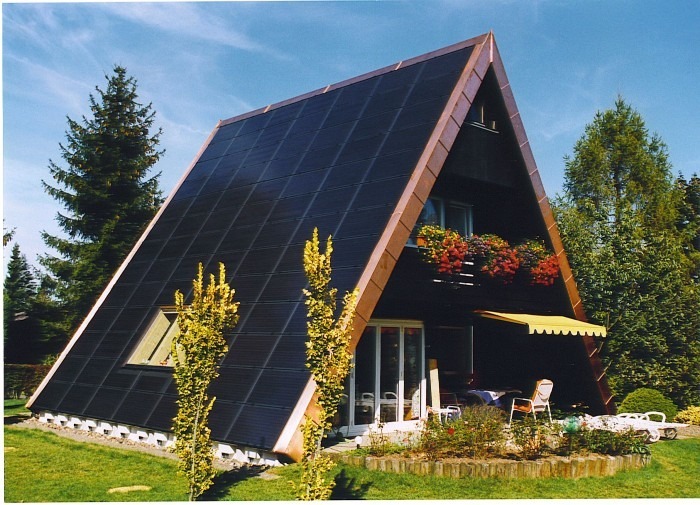1. On-grid – also known as a grid-tie solar system
2. Off-grid – also known as a stand-alone power system
3. Hybrid – Solar system with battery storage with grid-connection
On-Grid System
These setups are linked to the public electricity grid and do not necessitate battery storage. Any excess solar energy generated by an on-grid system during the daytime (which isn’t used immediately in your home) is sent back to the electricity grid, and you typically receive compensation through a feed-in-tariff (FiT) for the exported energy. During the night, you rely on grid electricity.
In contrast to hybrid systems, grid-tie solar systems cannot operate or generate electricity during a power outage or blackout for safety reasons. Blackouts typically occur when there is damage to the electricity grid. If the solar inverter continued to supply electricity to a damaged grid, it would pose a safety risk to the workers repairing the network faults. However, most hybrid solar systems with battery storage can automatically disconnect from the grid (a process known as islanding) and continue functioning during a blackout.
Off-Grid System
An off-grid system, often referred to as a standalone system, operates independently of the electricity grid and consequently relies on battery storage. Designing an effective off-grid solar system requires careful consideration to ensure it can consistently generate sufficient power throughout the year and possesses adequate battery capacity to meet the household’s energy demands, even during the darkest winter months when sunlight is scarce. However, it’s worth noting that the increased expenses associated with batteries and inverters make off-grid systems considerably more costly than their on-grid counterparts.
Battery Bank: In an off-grid setup, there’s no connection to the public electricity grid. Any surplus solar power generated by your system that isn’t immediately consumed by your appliances gets directed to a battery bank. Once the battery bank reaches its storage capacity, it ceases to accept further power from the solar system. During periods when your solar system isn’t generating power, such as nighttime or overcast days, your appliances draw energy from the batteries.
Backup Generator: To address situations when the batteries run low on charge, especially during extended cloudy periods, a backup power source becomes essential. This backup can take the form of a generator or gen-set, ensuring a continuous and reliable power supply.
Hybrid System
With the decreasing cost of battery storage, systems that are already connected to the electricity grid can now harness the benefits of battery storage as well. This allows for the storage of solar energy generated during the day for use during nighttime hours. Hybrid systems provide the flexibility of both stored energy and grid connectivity, offering consumers the best of both worlds. Additionally, these systems prove invaluable during load shedding by continuing to power your loads even during grid outages.
There are various approaches to designing hybrid systems:
Battery Bank: In a hybrid system, surplus solar power not immediately utilized by your property’s appliances is directed to your battery bank. Once the battery bank reaches its storage capacity, it ceases to accept power from the solar system.
Meter and Electricity Grid: Depending on the configuration of your hybrid system and the policies of your utility provider, excess solar power beyond your appliance requirements can be exported to the grid through your meter. During periods of low solar generation and after depleting the stored power in your batteries, your appliances will draw electricity from the grid.

